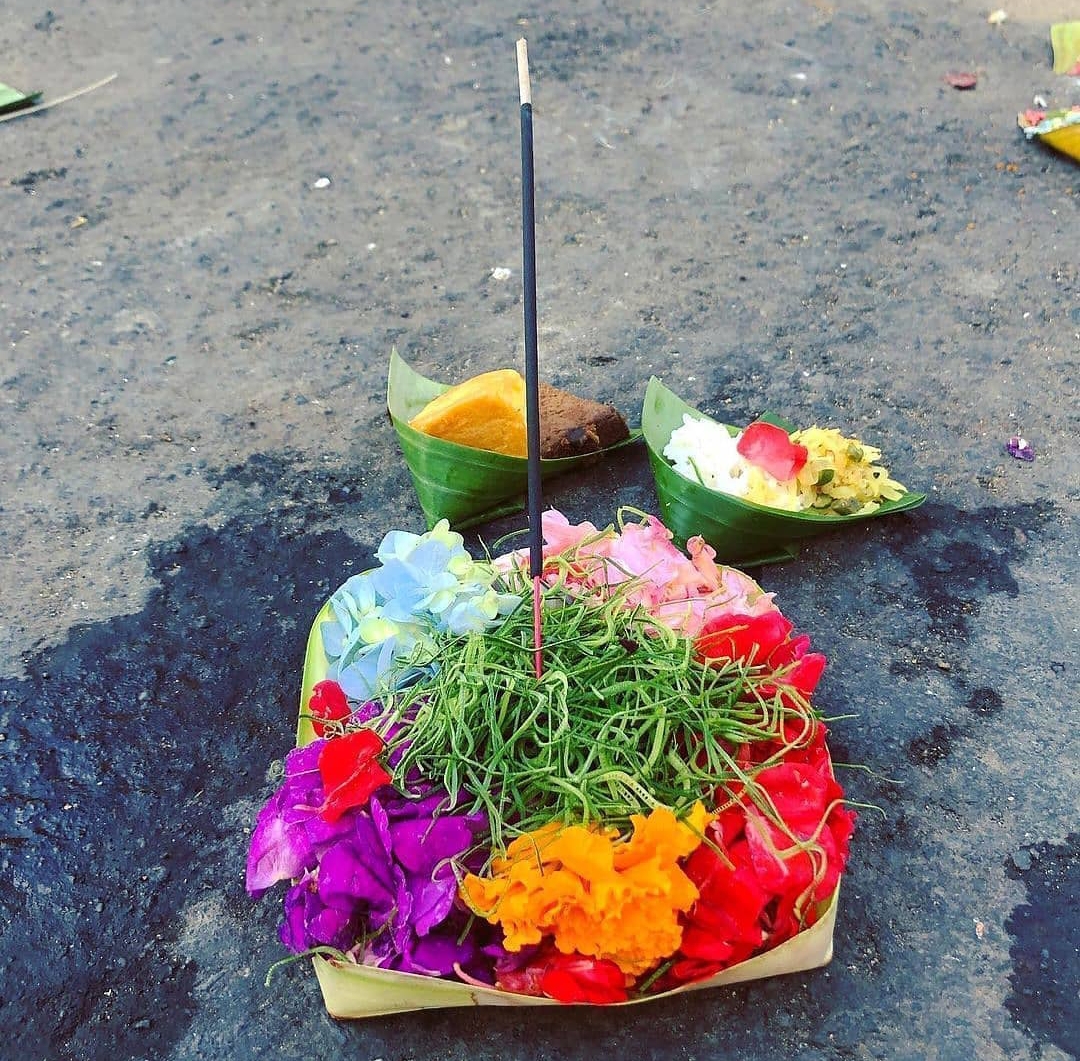Canang sari is one of the essential offerings in Balinese Hindu religious rituals. This sacred offering is commonly found in temples, home shrines, and even on streets as part of daily devotion or larger ceremonies (yadnya).
According to various sources, canang sari was first introduced by Mpu Sangkulputih, who succeeded Danghyang Rsi Markandeya as a high priest at Pura Besakih.
Despite its small size, canang sari plays a crucial role in Balinese Hindu worship. It is a fundamental part of every offering (banten) presented during religious ceremonies.
The term “canang” comes from the Kawi language, where “can” means beautiful, and “nang” means purpose or intention. Meanwhile, “sari” translates to essence. Therefore, canang sari symbolizes a request for divine wisdom (widya) from Sang Hyang Widhi (God) and His manifestations, both seen and unseen.
Each element in canang sari holds deep symbolic meaning, representing various aspects of life and spirituality. Below are the main components of canang sari and their significance:
- Ceper (Base of Canang Sari)
Ceper is a square-shaped base symbolizing the human body (angga-sarira). Its four sides represent the fundamental elements of life: panca maha bhuta, panca tan matra, panca buddhindriya, and panca karmendriya. If the canang is placed directly on the ceper, it symbolizes ardha candra (half-moon), while using a small tamas base represents windhu (essence of life).
- Rice (Wija/Pija)
Rice represents Sang Hyang Atma, symbolizing life and the soul within the human body. It also signifies the seed of life bestowed by Ida Sang Hyang Widhi Wasa in the form of the atma (spirit).
- Porosan
Porosan consists of betel leaf, lime (kapur), and areca nut (gambir). These elements symbolize tri premana—bayu (action), sabda (speech), and idep (thought)—which enable human activity. Additionally, porosan represents the Hindu Trimurti:
- Lime (kapur): Represents Lord Shiva
- Betel leaf: Represents Lord Vishnu
- Areca nut (gambir): Represents Lord Brahma
Porosan serves as a reminder for Hindus to cultivate love, compassion, and gratitude toward Sang Hyang Widhi.
- Snacks, Sugarcane, and Banana
These items symbolize tedong ongkara, the cycle of creation (upetti), preservation (stiti), and dissolution (pralina) in the universe.
- Sampian Uras/Duras
This ornament represents the continuous cycle of life, accompanied by astaa iswarya (eight characteristics of existence).
- Flowers and Their Arrangement
Flowers in canang sari are not just decorations; they carry spiritual meanings based on their color and placement:
- White flowers in the east: Represent Sang Hyang Iswara
- Red flowers in the south: Represent Sang Hyang Brahma
- Yellow flowers in the west: Represent Sang Hyang Mahadewa
- Blue or green flowers in the north: Represent Sang Hyang Vishnu
- Mixed flowers in the center: Symbolize panca dewata (five divine energies) and wisdom in life
The combination of different flowers reflects the ups and downs of human life, emphasizing the need for wisdom to navigate challenges.
- Lepa or Boreh Miyik
Lepa (fragrant paste) symbolizes personal conduct and behavior. It signifies that good actions and positive behavior enhance one’s reputation in society.
- Fragrant Oil
The fragrance in canang sari represents inner peace and self-control. It reminds individuals to maintain emotional balance for a harmonious life.
Canang sari is not merely an offering in Balinese Hindu tradition; it carries profound philosophical significance. Each component reflects the harmony between body, soul, and spirituality, teaching humans to live with wisdom, compassion, and gratitude toward Sang Hyang Widhi. (BT)





